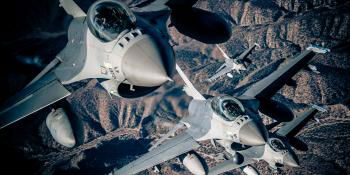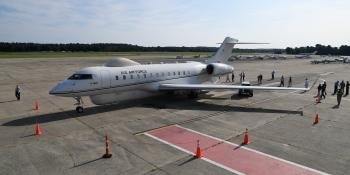The US Air Force (USAF) has contracted Northrop Grumman to continue sustainment and modification work for its E-8C Joint Surveillance Target Attack Radar System (Joint STARS) fleet.
The contract – worth US$302m – was announced on January 9, and will see the US-based company start a Total System Support Responsibility (TSSR) programme for the USAF’s fleet of E-8C Joint STARS airborne ground intelligence, surveillance and reconnaissance (ISR), battle management command and control aircraft.
Northrop Grumman will act as the prime systems integrator of each of the nine components of the programme’s support and sustainment.
Janice Zilch, vice president of Manned Airborne Surveillance Programs at Northrop Grumman, said: “The capacity and technology of the Joint STARS weapon system make it unique in the multi-domain command and control arena… Northrop Grumman has delivered innovative capability to this aircraft system for more than 30 years to give the Joint Force a strategic advantage.”
![E-8C Joint STARS [USAF]](/sites/default/files/inline-images/E-8C%20Joint%20STARS%20%5BUSAF%5D.jpg)
The USAF has operated the Joint STARS – a fleet of extensively modified Boeing 707-300s – operationally since 1991. Since then, E-8s have participated in US military operations across Europe and the Middle East. In early-November 2019, the air arm concluded the Joint STARS’ 18-year long continuous deployment in the Middle East where crews racked up 114,426 combat flying hours across 10,938 sorties in support of US Central Command (CENTCOM) operations in the region under ‘Team JSTARS’. The deployment was the second longest in USAF history. To read more about its conclusion, follow this link.
USAF E-8C Joint STARS are based at Robins Air Force Base (AFB), Georgia, under Air Combat Command’s 461st Air Control Wing (ACW) and the Georgia Air National Guard’s (ANG) 116th ACW. The US Army is also present in Joint STARS operations, under its Intelligence and Security Command’s 138th Military Intelligence Company.
Despite the new contract, the USAF has been seeking to retire and replace the E-8C Joint STARS for some time. It intended to find a replacement through the Joint STARS recap programme, which would have seen the E-8C replaced with a platform similar to the Royal Air Force-operated Raytheon Sentinel R1. However, the programme was cancelled due to fears of the platform’s survivability against new, advanced Russian and Chinese air defence systems. The USAF is now exploring the Advanced Battle Management System (ABMS) as a direct replacement – which would be employed using space-based and/or unmanned assets. As per the US FY2019 defence budget, the air arm was barred from retiring the E-8C until the ABMS is operational, with 2025 being set as the Joint STARS’ current out of service date.




